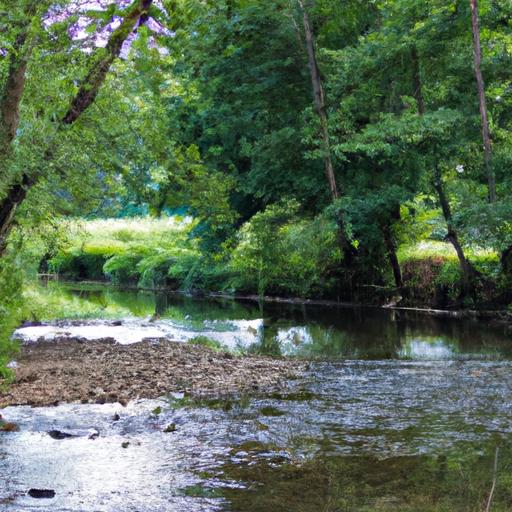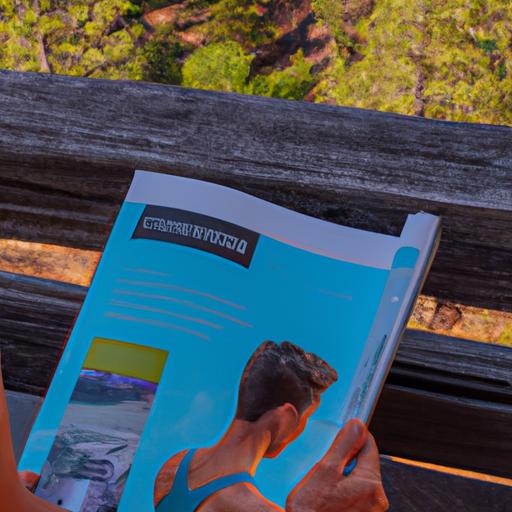Introduction
Are you ready to embark on an exciting fishing journey but unsure of how to rig your fishing pole? Look no further! In this comprehensive guide, I will walk you through the step-by-step process of rigging a fishing pole like a pro. Whether you’re a beginner or an experienced angler, mastering the art of rigging is essential for maximizing your chances of reeling in that trophy fish. So, grab your fishing pole and let’s dive in!
The Importance of Fishing Poles in Fishing
Before we delve into the nitty-gritty of rigging, let’s take a moment to appreciate the significance of fishing poles in the world of angling. Fishing poles, also known as fishing rods, are the primary tools we use to cast our lines and engage in the age-old pursuit of fishing. Whether you’re fishing in tranquil lakes, rushing rivers, or vast oceans, a well-rigged fishing pole is your gateway to success.
Purpose of the Article: how to rig a fishing pole
Now that we understand the role of fishing poles in fishing, let’s focus on the purpose of this article: to equip you with the knowledge and skills to rig your fishing pole effectively. Rigging refers to the process of assembling and setting up various components on your fishing pole, such as the fishing line, hooks, sinkers, and bobbers. Proper rigging ensures that your bait is presented attractively, increasing the likelihood of enticing your target catch.
In the upcoming sections, we will explore each element of the rigging process in detail. From selecting the right fishing line to adding sinkers and bobbers, we will cover everything you need to know to rig your fishing pole like a seasoned angler. So, let’s get started on this exciting journey of mastering the art of rigging a fishing pole!
Stay tuned for Section II, where we will unravel the basics of fishing pole rigging and explore the different components involved. Get ready to take your fishing skills to new heights as we unlock the secrets of rigging success.
Selecting the Right Fishing Line for Rigging
When it comes to rigging your fishing pole, one of the crucial decisions you’ll need to make is selecting the right fishing line. The fishing line serves as the vital connection between you and your potential catch, so choosing the appropriate line is essential for a successful fishing expedition. In this section, we’ll explore the different types of fishing lines available, the factors to consider when selecting a line, and provide you with a step-by-step guide on how to spool the line onto your pole.
A. Overview of Different Types of Fishing Lines
Before you dive into the world of fishing line selection, it’s important to understand the various types available. There are three primary types of fishing lines: monofilament, fluorocarbon, and braided lines.
-
Monofilament: This traditional fishing line is made from a single strand of nylon. It offers versatility, affordability, and ease of use. Monofilament lines are ideal for beginners due to their forgiving nature and excellent knot strength.
-
Fluorocarbon: Fluorocarbon lines have gained popularity in recent years due to their exceptional invisibility underwater. They are less visible to fish, resulting in more bites. Fluorocarbon lines also have excellent abrasion resistance and sink faster, making them suitable for fishing in deeper waters.
-
Braided Lines: Made from woven synthetic fibers, braided lines are known for their incredible strength and sensitivity. These lines have a smaller diameter, allowing for longer casts and increased line capacity on your reel. Braided lines are perfect for targeting larger fish species and fishing in heavy cover.
B. Factors to Consider When Selecting a Fishing Line for Rigging
Choosing the right fishing line requires careful consideration of several factors. Here are some key aspects to keep in mind:
-
Target Fish Species: Different fish species have varying preferences and behaviors. Consider the species you intend to catch, their habitat, and their feeding patterns to determine the best line for your fishing needs.
-
Fishing Location: The type of water you’ll be fishing in, such as freshwater or saltwater, influences the line you should choose. Saltwater environments may require lines with higher abrasion resistance to withstand the harsh conditions.
-
Fishing Technique: Your preferred fishing technique, whether it’s casting, trolling, or finesse fishing, impacts the line’s performance. Some lines excel in specific fishing techniques, so match your line choice accordingly.
C. Step-by-Step Guide on How to Spool the Fishing Line onto the Pole
Now that you have a better understanding of the different types of fishing lines and the factors to consider, let’s move on to spooling the line onto your fishing pole. Follow these steps for a seamless spooling process:
-
Prepare Your Pole: Attach the fishing reel to your fishing pole according to the manufacturer’s instructions.
-
Thread the Line: Start by tying the end of the fishing line to the reel’s spool. Thread the line through the rod’s guides, ensuring it flows smoothly.
-
Apply Tension: As you spool the line, apply gentle tension with your free hand to prevent the line from tangling or twisting.
-
Even Distribution: Make sure the line is distributed evenly across the spool. Avoid overfilling or leaving excessive gaps.
-
Secure the Line: Once the line is spooled, tie a secure knot to prevent it from unraveling.
By selecting the right fishing line and properly spooling it onto your pole, you’ll be one step closer to rigging success. In Section IV, we’ll explore the next vital component of fishing pole rigging: choosing the appropriate hooks. Stay tuned to learn more tips and techniques!
Choosing the Appropriate Hooks for Rigging
Explanation of Different Types and Sizes of Fishing Hooks
When it comes to choosing hooks for rigging your fishing pole, understanding the various types and sizes available is crucial. Fishing hooks come in a wide range of shapes, sizes, and designs, each suited for specific fishing techniques and target species. From the classic J-hooks to circle hooks and treble hooks, there’s a hook for every angling need.
J-hooks, with their distinct “J” shape, are the most commonly used hooks. They work well for a wide variety of fishing scenarios and are suitable for both live and artificial bait. Circle hooks, on the other hand, have a unique circular bend that helps reduce deep hooking and increases the chances of a successful catch-and-release. Treble hooks, featuring three sharp points, are often used for lures and are effective in hooking multiple fish simultaneously.
Factors to Consider When Selecting Hooks for Rigging
Choosing the right hook involves considering several factors. First and foremost, consider the size of the hook. Hook sizes are numbered, with larger numbers indicating smaller hooks. The size of the hook should match the size of your bait and the species you’re targeting. Using excessively large hooks can deter smaller fish, while using too small hooks may result in missed opportunities for larger catches.
Another crucial factor is the type of fishing technique you’ll be employing. Different techniques, such as bottom fishing, trolling, or fly fishing, require specific hook styles and sizes. Understanding the nuances of each technique will help you select the appropriate hook for optimal results.
Lastly, take into account the fishing conditions, such as water clarity and the behavior of the target species. For instance, in clear water, smaller and more discreet hooks may be necessary to entice wary fish. Additionally, knowing the feeding habits and mouth structure of the fish you’re targeting will help you choose hooks that maximize hook-up rates.
Step-by-Step Guide on How to Attach Hooks to the Fishing Line
Now that you’re familiar with the different types of hooks and the factors to consider, let’s dive into attaching hooks to your fishing line. Begin by tying a secure knot at the end of your fishing line, ensuring it won’t come undone during a fierce battle with a fish. One popular knot is the improved clinch knot, which is both easy to tie and strong.
To attach the hook, pass the tag end of the line through the eye of the hook, wrapping it around the main line 4-6 times. Then, thread the tag end back through the loop formed above the eye of the hook, creating a second loop. Moisten the line and slowly pull the main line to tighten the knot, ensuring it sits snugly against the eye of the hook. Trim any excess line, and voila! Your hook is securely attached and ready for action.
Stay tuned for Section V, where we will explore the vital role of sinkers and bobbers in fishing pole rigging. Discover how these simple yet essential components can elevate your fishing experience to new heights.
Adding Sinkers and Bobbers to the Rig
A. Importance of Sinkers and Bobbers in Fishing Pole Rigging
When it comes to fishing pole rigging, sinkers and bobbers play a crucial role in enhancing your chances of a successful catch. Sinkers, also known as weights, are designed to make your bait sink deeper into the water, reaching the desired depth where your target fish may be lurking. On the other hand, bobbers, sometimes called floats, serve as indicators that signal when a fish has taken the bait. They help maintain the bait at a specific depth while providing visual cues when a fish bites.
By utilizing sinkers and bobbers strategically, you can effectively control the depth and presentation of your bait, increasing the likelihood of enticing your desired catch. These simple yet effective tools can make a significant difference in your fishing experience, especially when targeting species that feed at specific depths or exhibit subtle bites.
B. Explanation of Different Types of Sinkers and Bobbers Available
To make the most of your fishing rig, it’s important to understand the various types of sinkers and bobbers available and their respective applications. Sinkers come in different shapes, sizes, and materials, each serving a unique purpose. From split shot sinkers to egg sinkers and pyramid sinkers, the choice depends on factors such as water conditions, target species, and fishing techniques.
Similarly, bobbers come in different designs, including round bobbers, slip bobbers, and clip-on bobbers. Each type offers distinct advantages and is suitable for specific fishing scenarios. Round bobbers are ideal for beginners and general fishing, while slip bobbers allow for precise depth control in deeper waters. Clip-on bobbers are convenient for quick adjustments and easy removal.
C. Step-by-Step Guide on How to Add Sinkers and Bobbers to the Rig
Now that we understand the significance of sinkers and bobbers in fishing pole rigging, let’s explore how to incorporate them into your rig effectively. Follow these steps to add sinkers and bobbers to your fishing pole rig:
- Determine the desired fishing depth based on the target species and water conditions.
- Slide the sinker onto the fishing line above the hook, ensuring it is secure but allows for movement.
- Adjust the position of the sinker based on the desired depth, moving it closer or farther from the hook as needed.
- Attach the bobber to the fishing line above the sinker, ensuring it is positioned at the desired depth.
- Test the rig by casting it into the water and observing the behavior of the bobber and sinker.
- Make any necessary adjustments to achieve the desired presentation and depth.
By following these steps and experimenting with different sinker and bobber combinations, you can optimize your fishing rig for maximum effectiveness. Stay tuned for the upcoming sections, where we will explore additional components and techniques to further enhance your fishing pole rigging skills.
Conclusion
Congratulations! You have now become well-versed in the art of rigging a fishing pole. By understanding the basics of fishing pole rigging, selecting the right components, and following the step-by-step instructions provided, you are now equipped to maximize your chances of success on your fishing adventures.
Remember, proper rigging is crucial for presenting your bait attractively and enticing your target catch. From selecting the right fishing line and hooks to adding sinkers and bobbers, each component plays a vital role in creating a successful rig. By paying attention to details and ensuring proper alignment and balance, you can increase your chances of landing that trophy fish.
As with any skill, practice makes perfect. Don’t be discouraged if you don’t achieve immediate success. Fishing is a journey of patience, learning, and continuous improvement. With each fishing expedition, you will gain valuable experience and refine your rigging techniques.
Now, it’s time to put your newfound knowledge into action. Grab your fishing pole, head to your favorite fishing spot, and apply the rigging techniques you have learned. Embrace the serenity of nature, savor the thrill of the catch, and create unforgettable memories along the way.
So, what are you waiting for? Get out there and rig your fishing pole like a pro. The waters are calling, and the fish are waiting. Happy fishing!
Remember to always adhere to local fishing regulations and practice responsible fishing to preserve our precious aquatic ecosystems.




